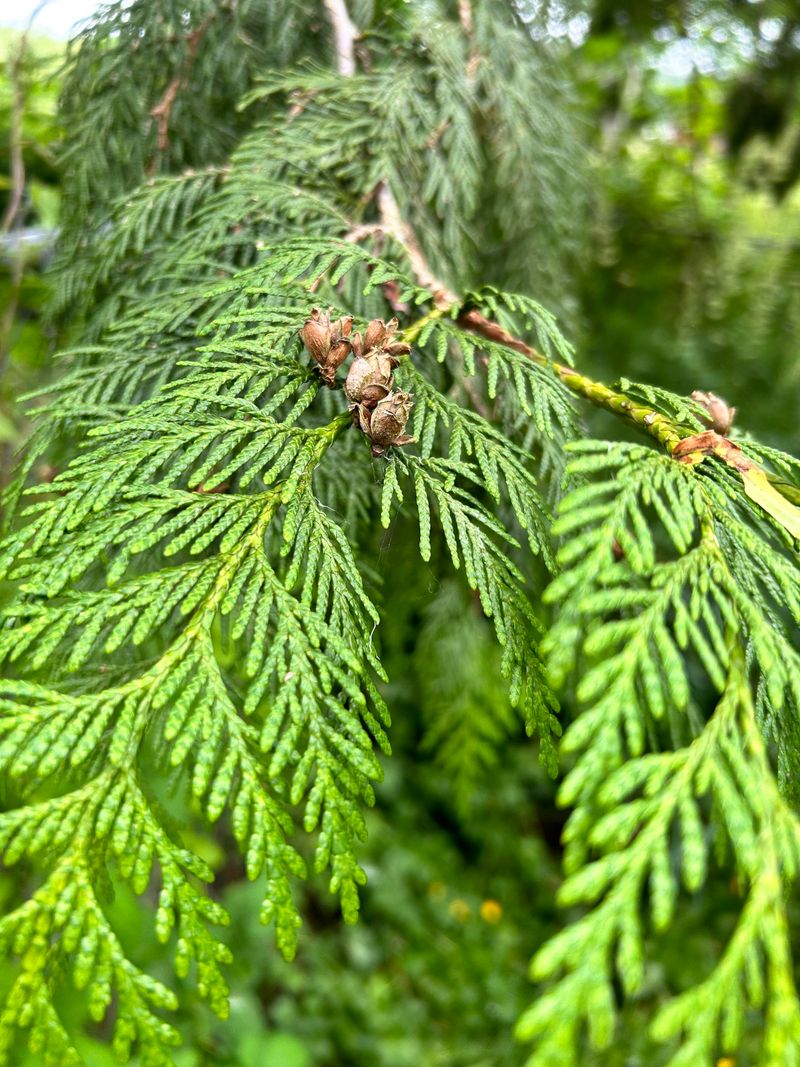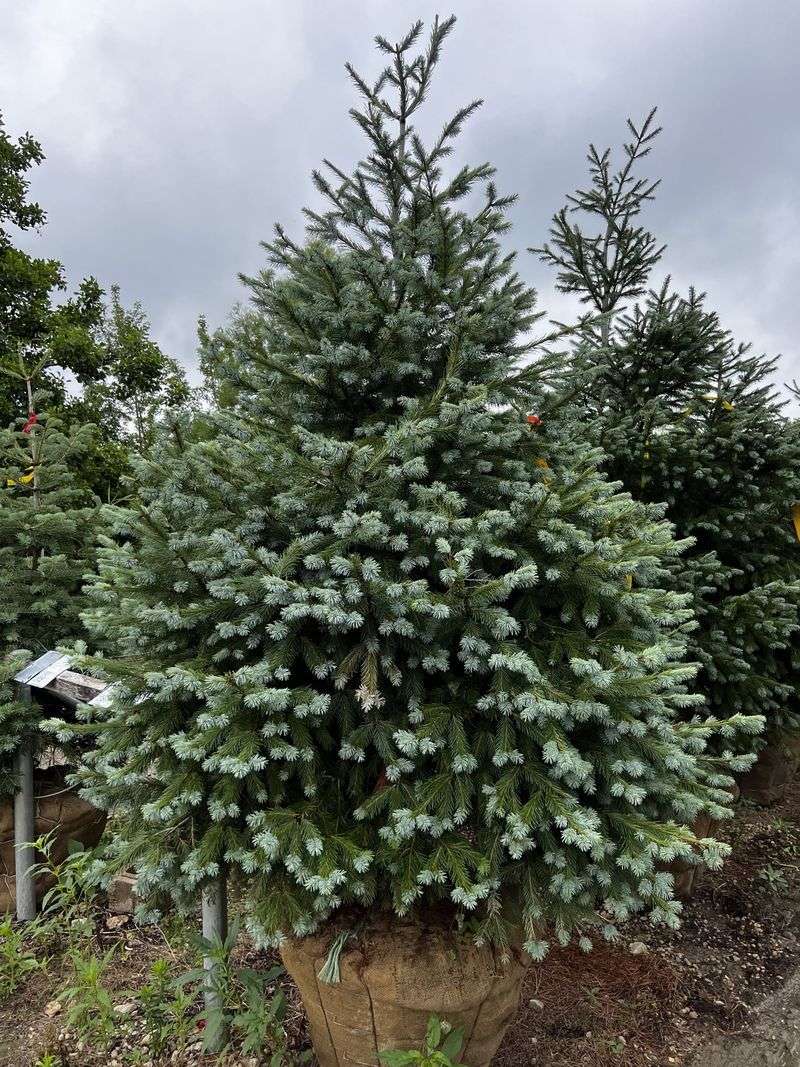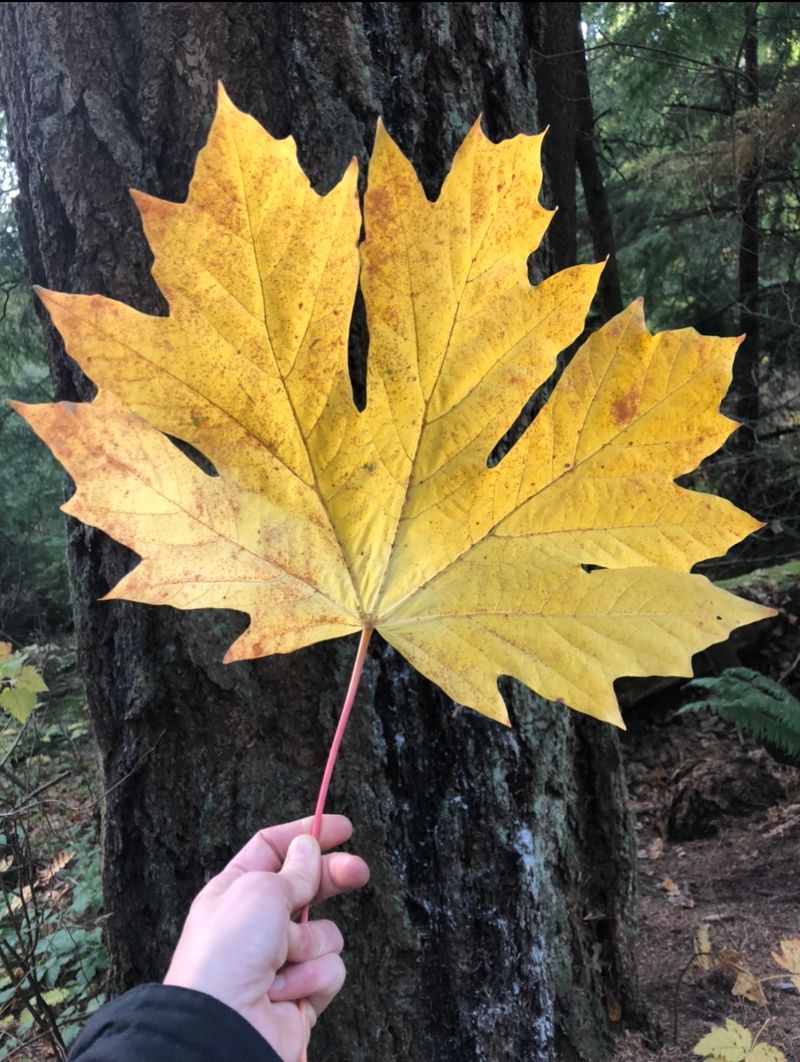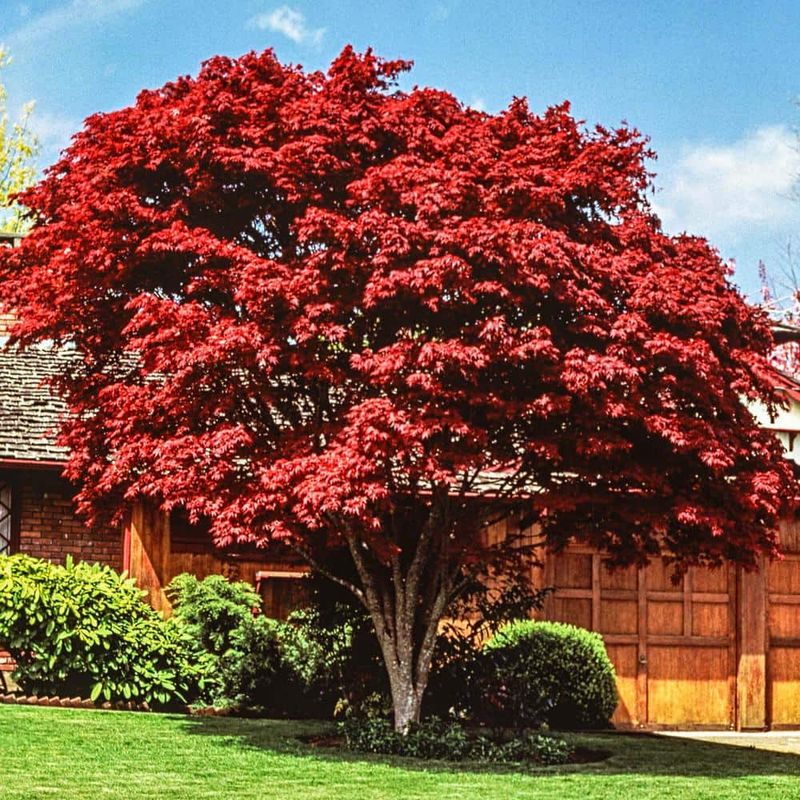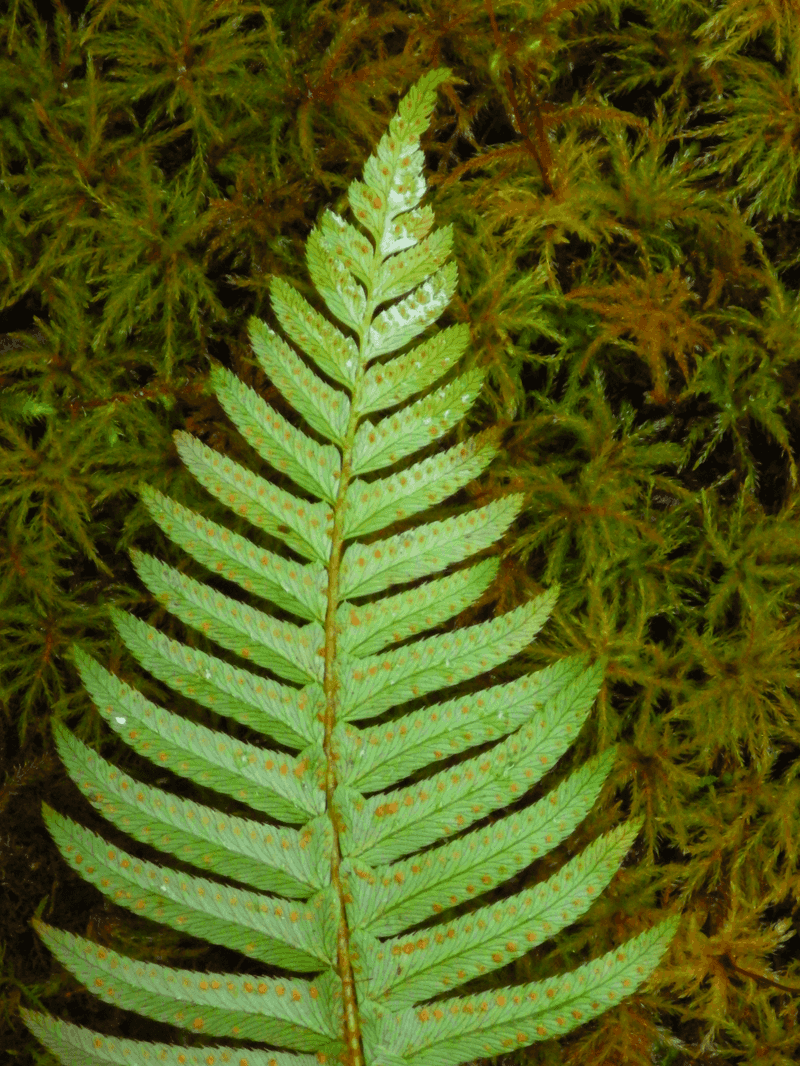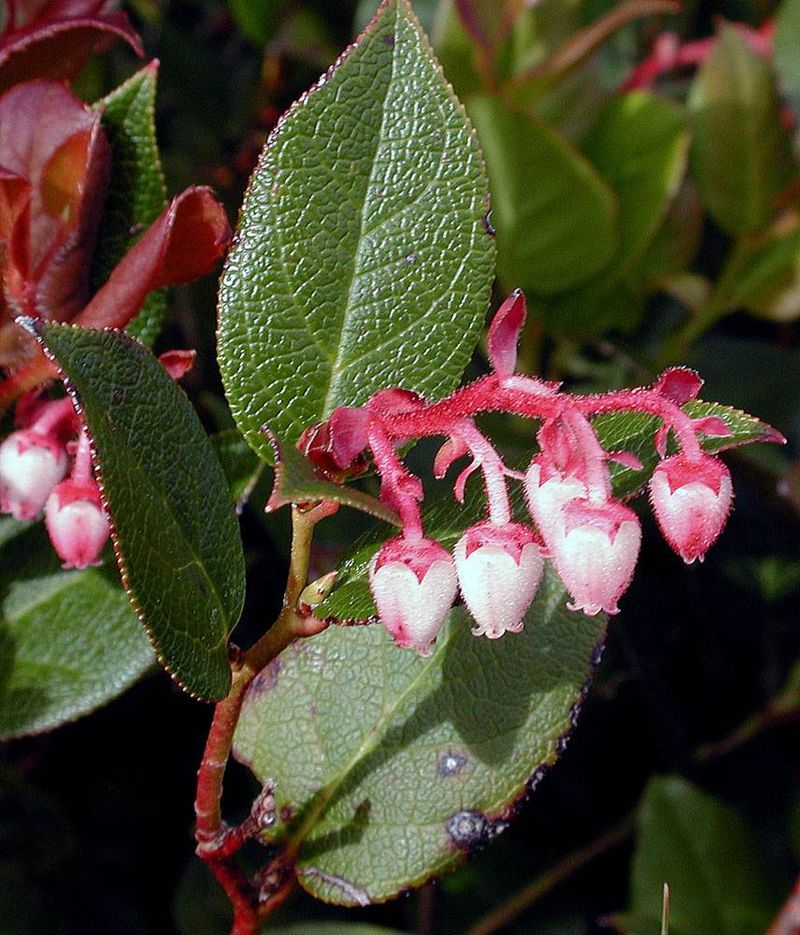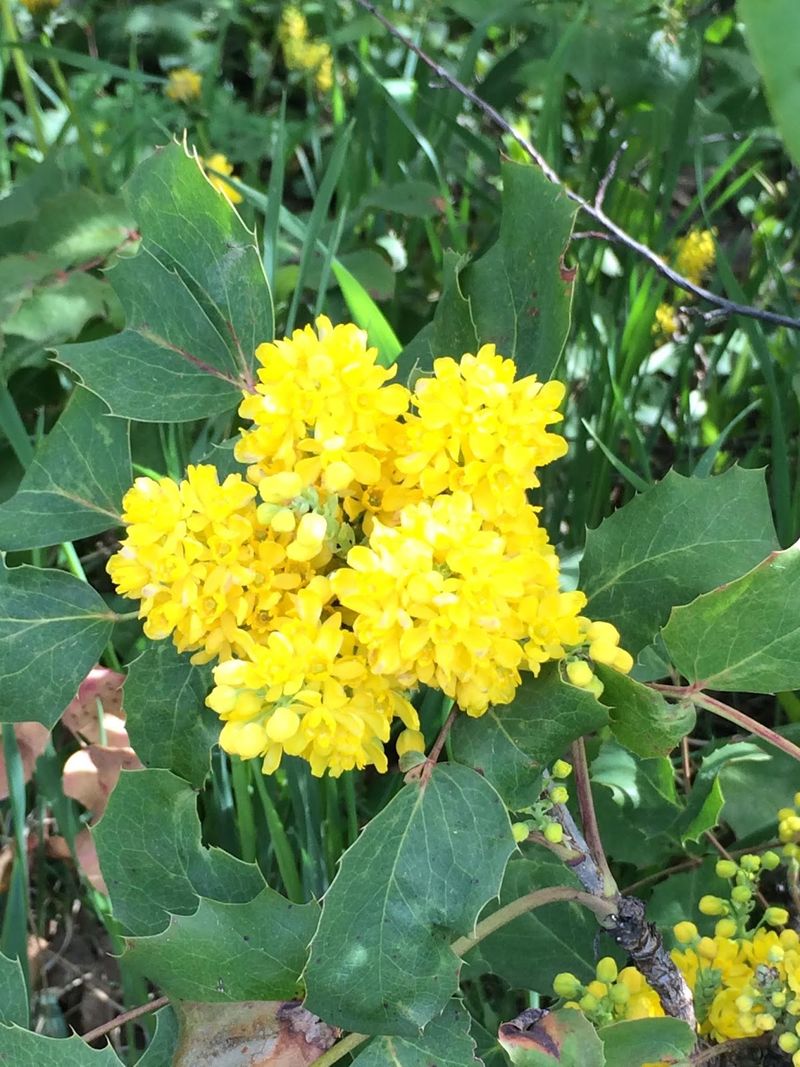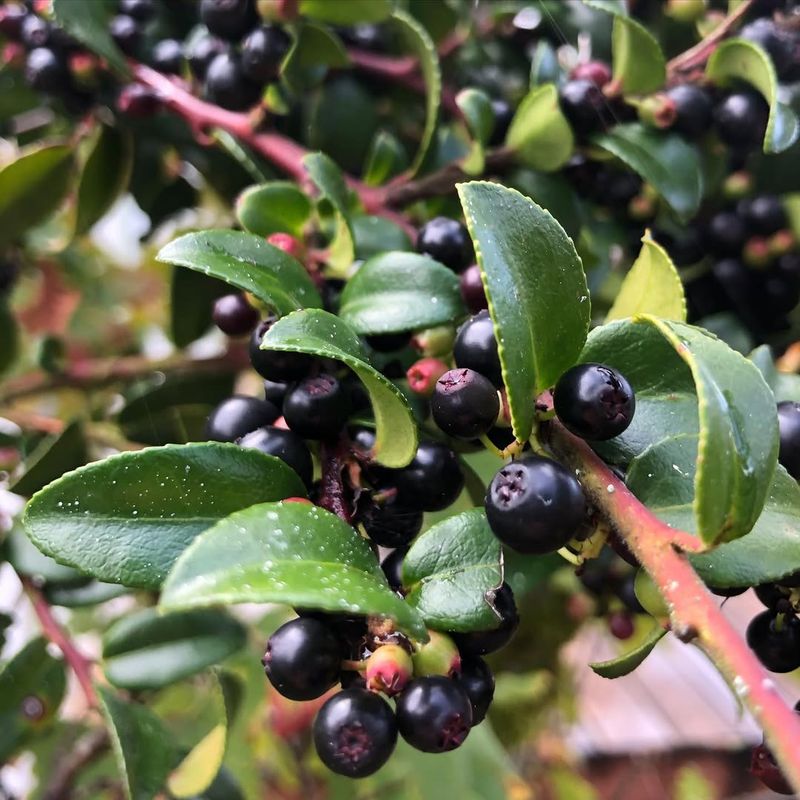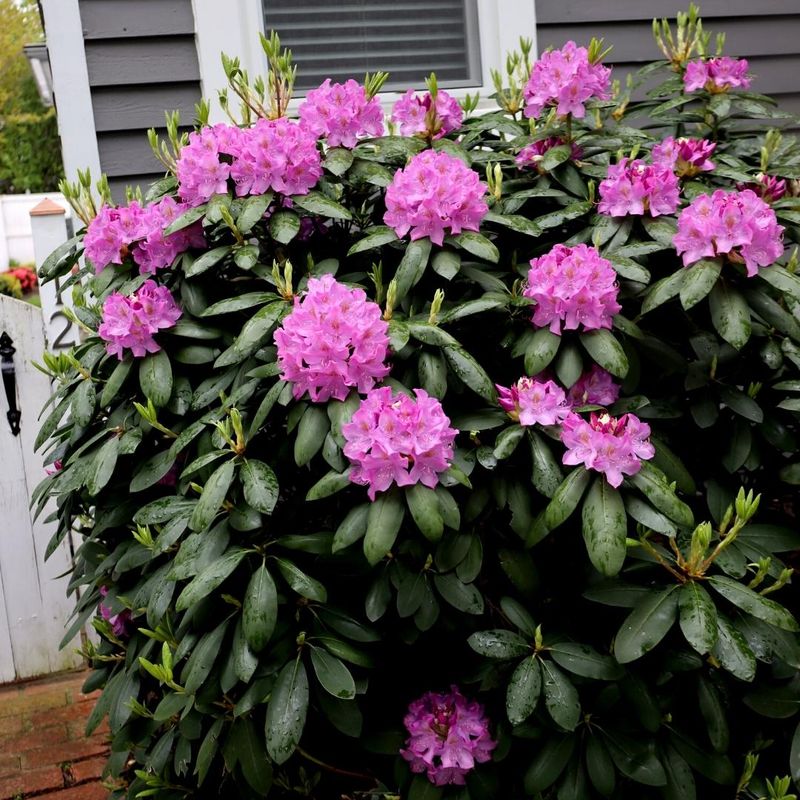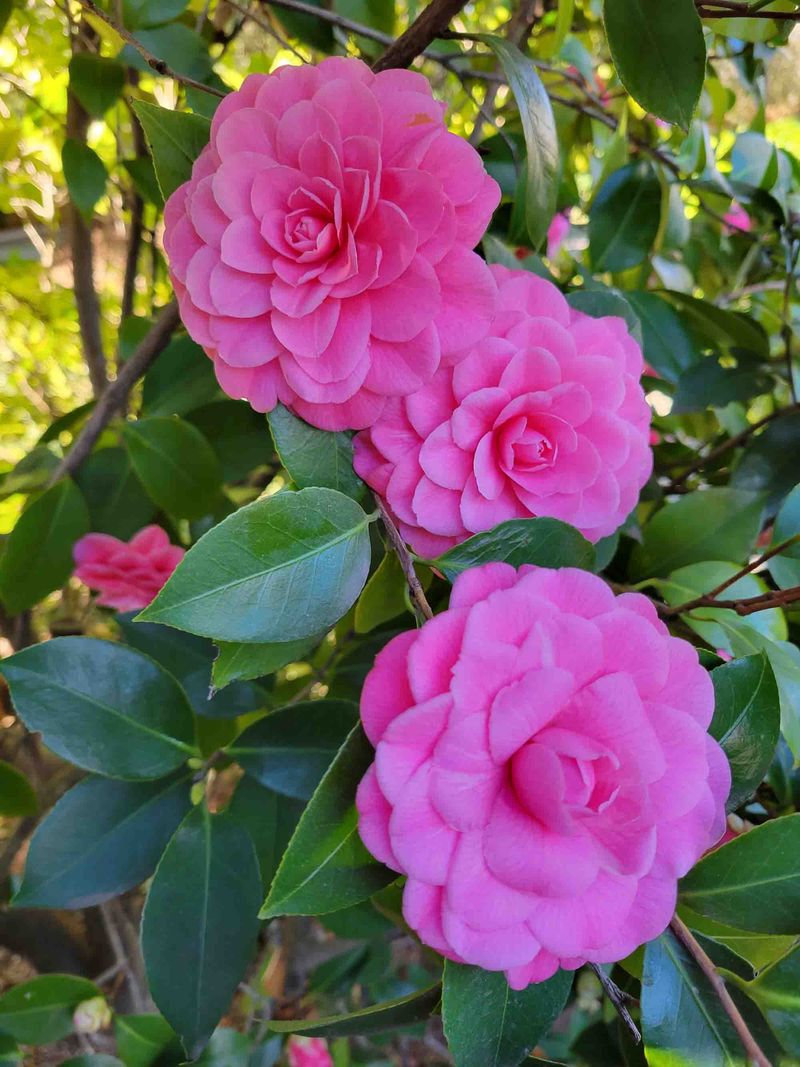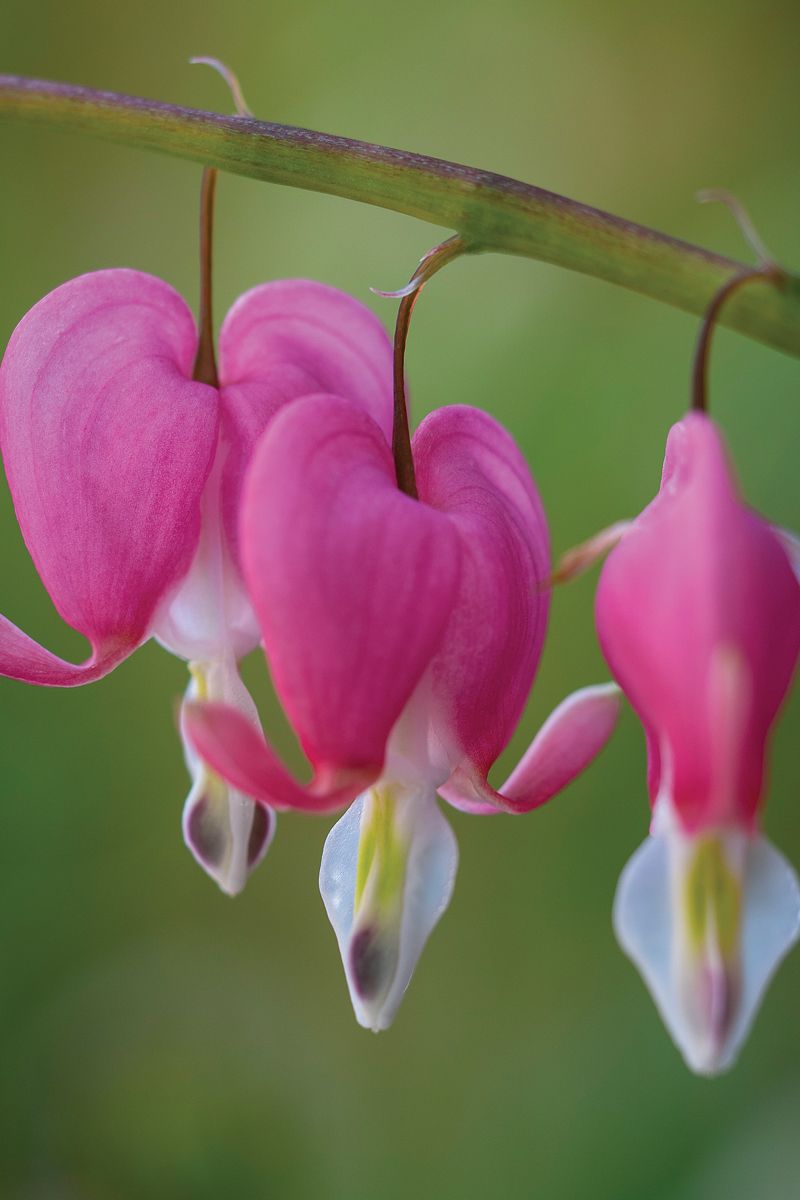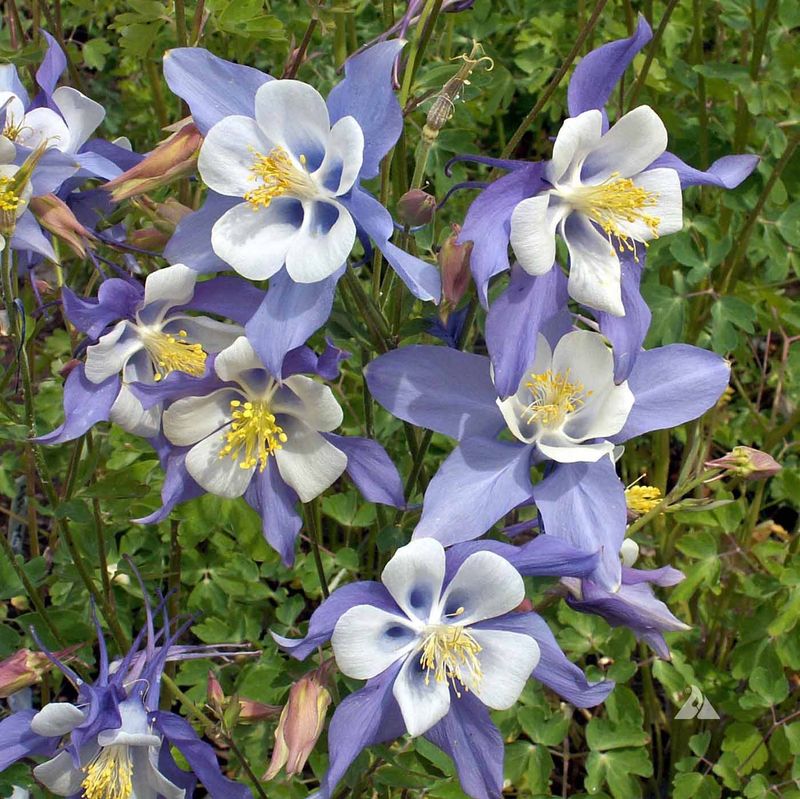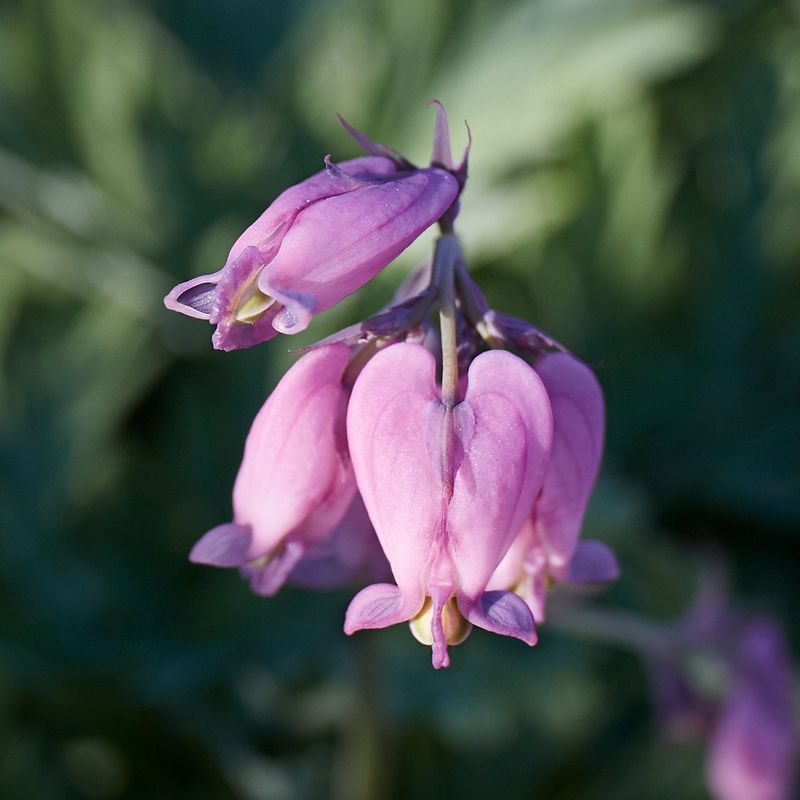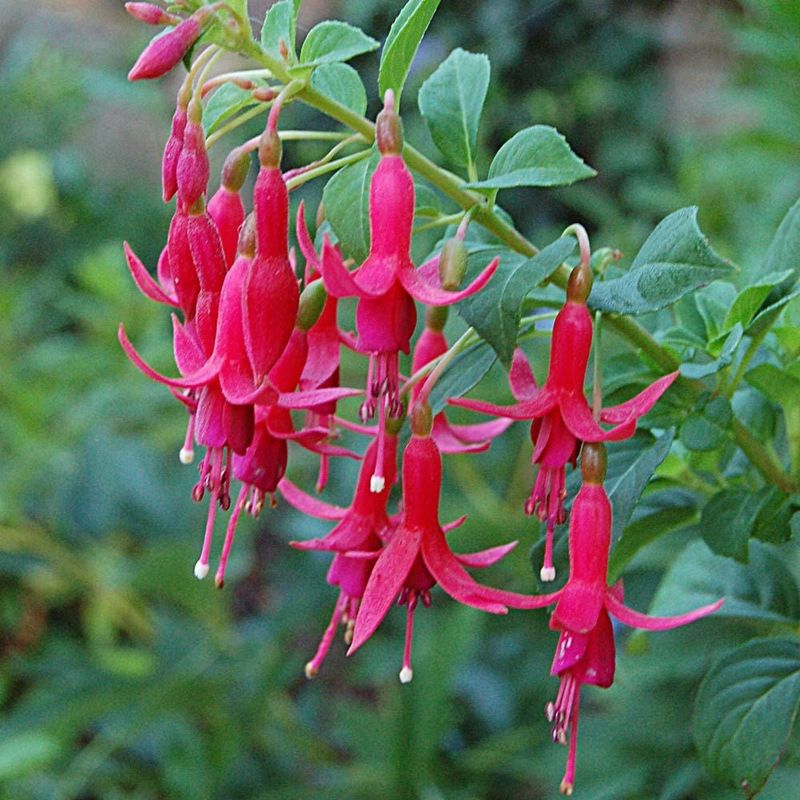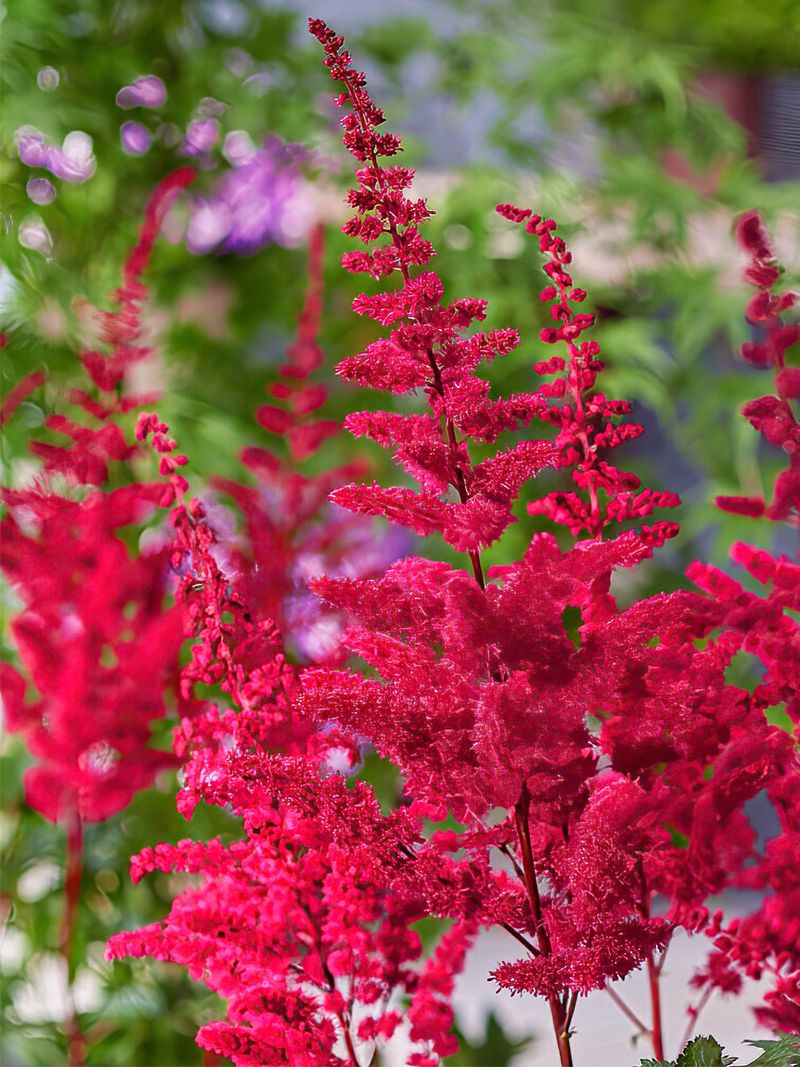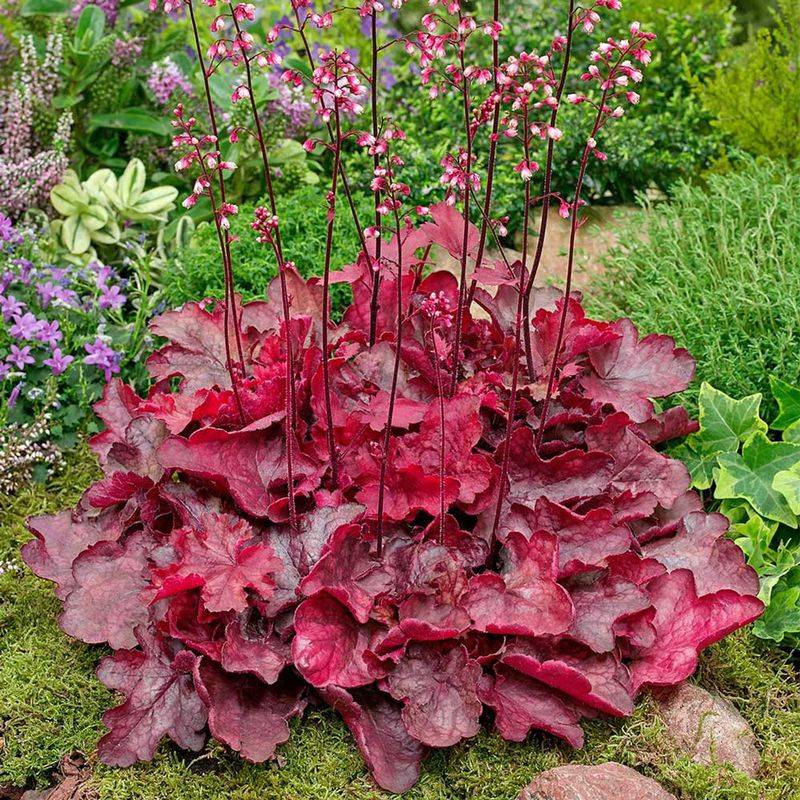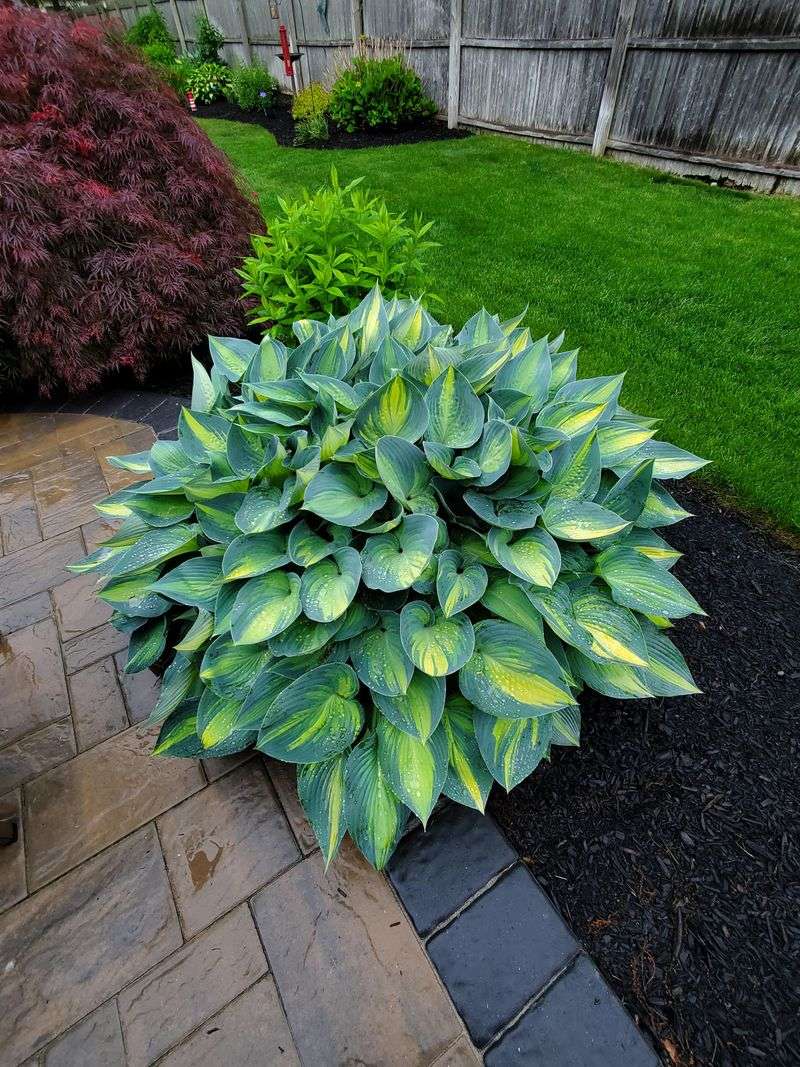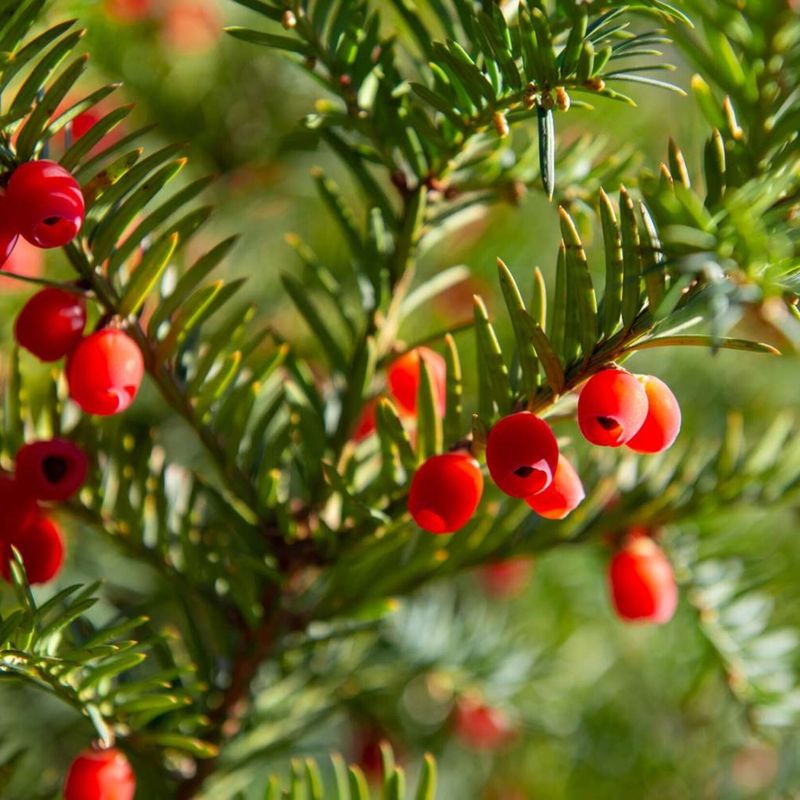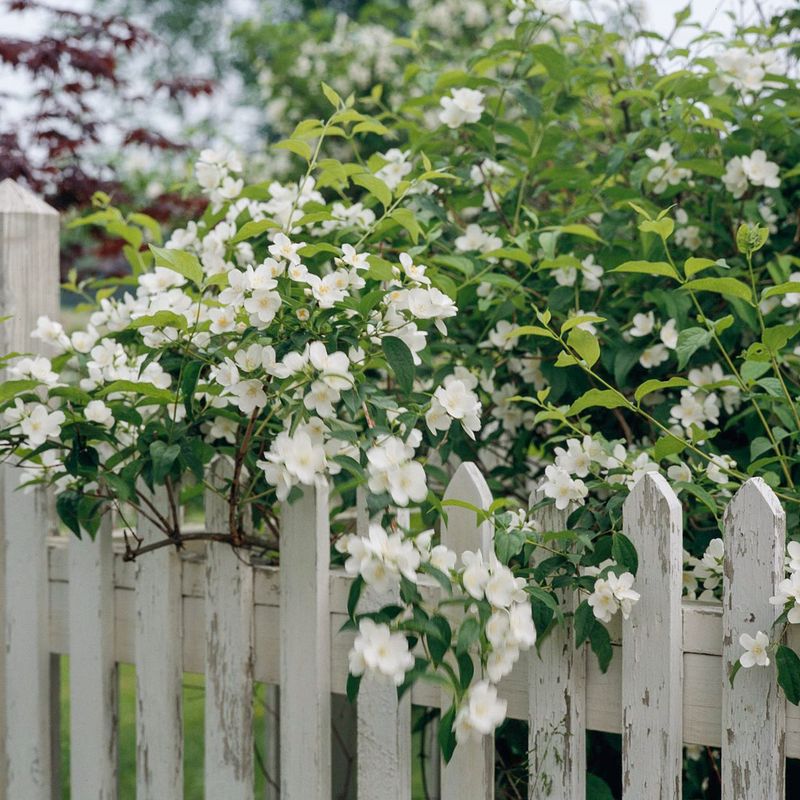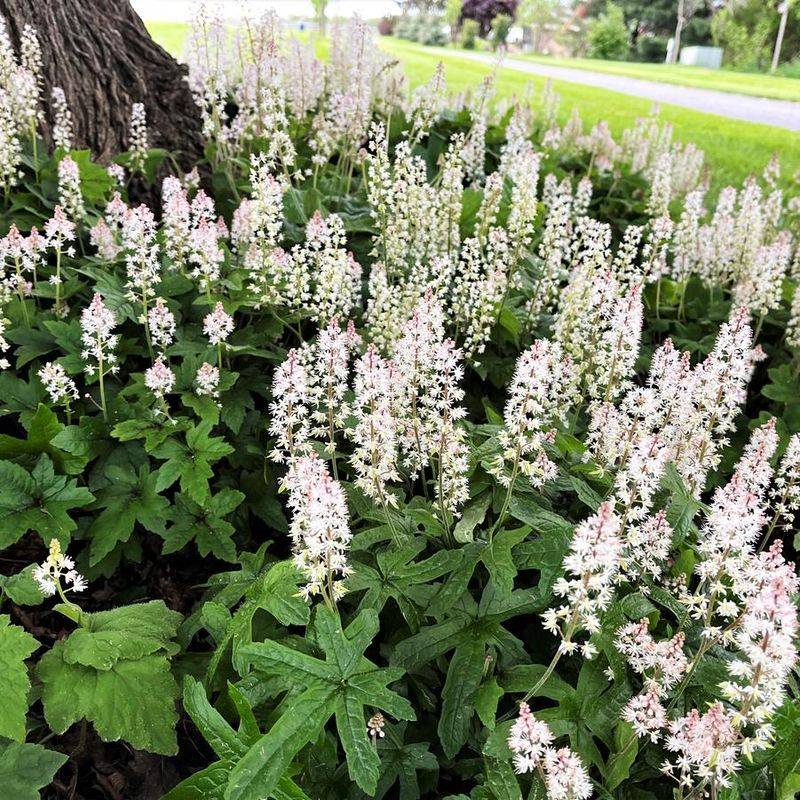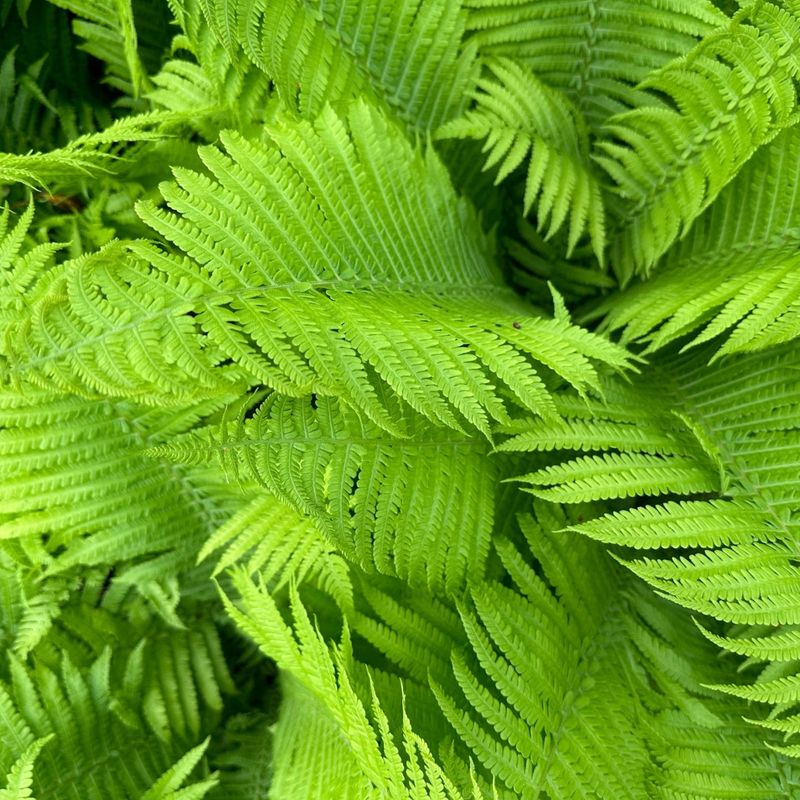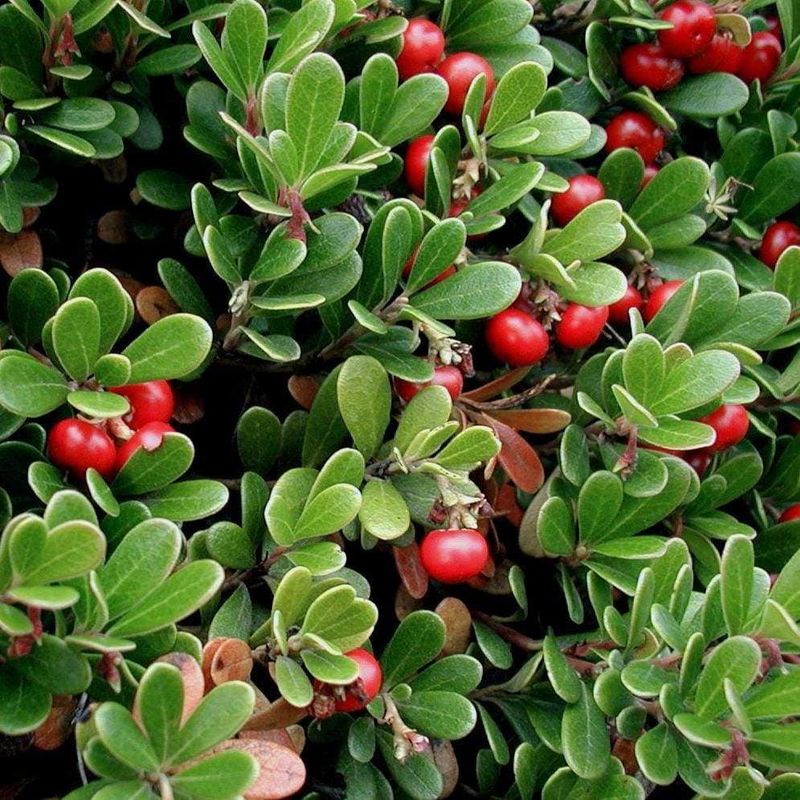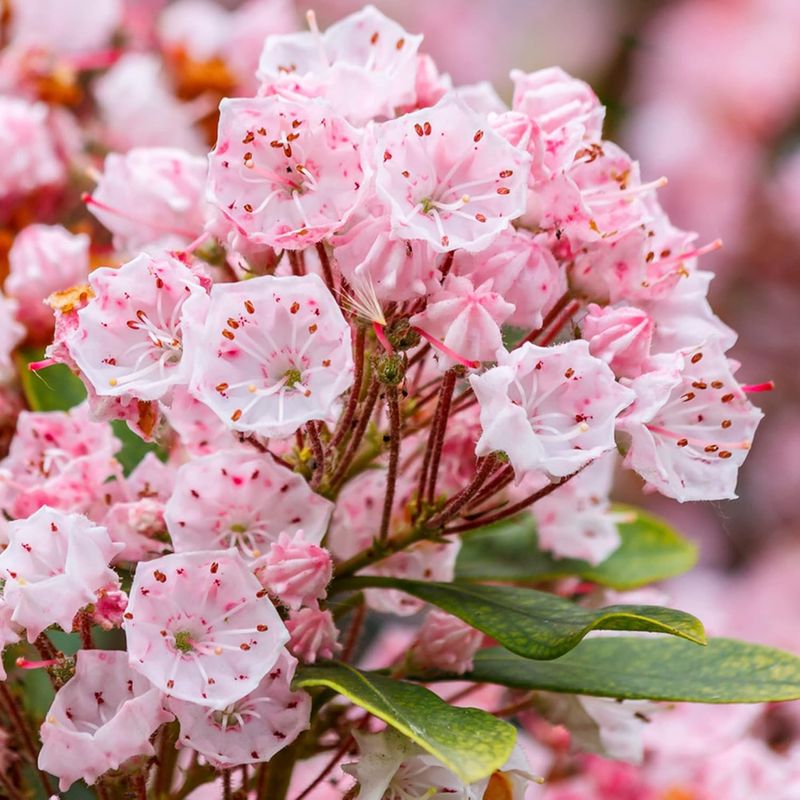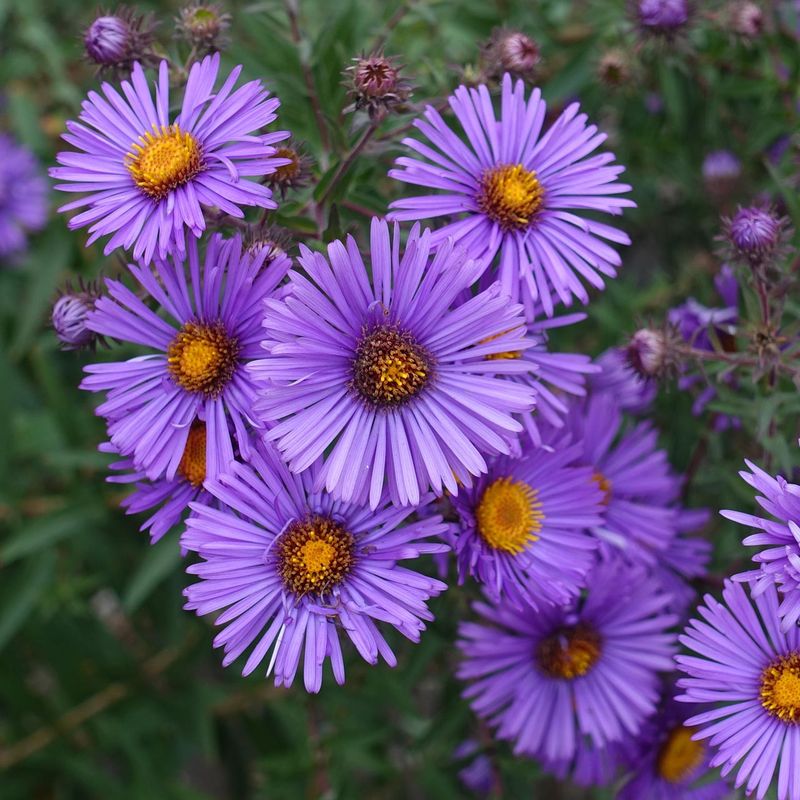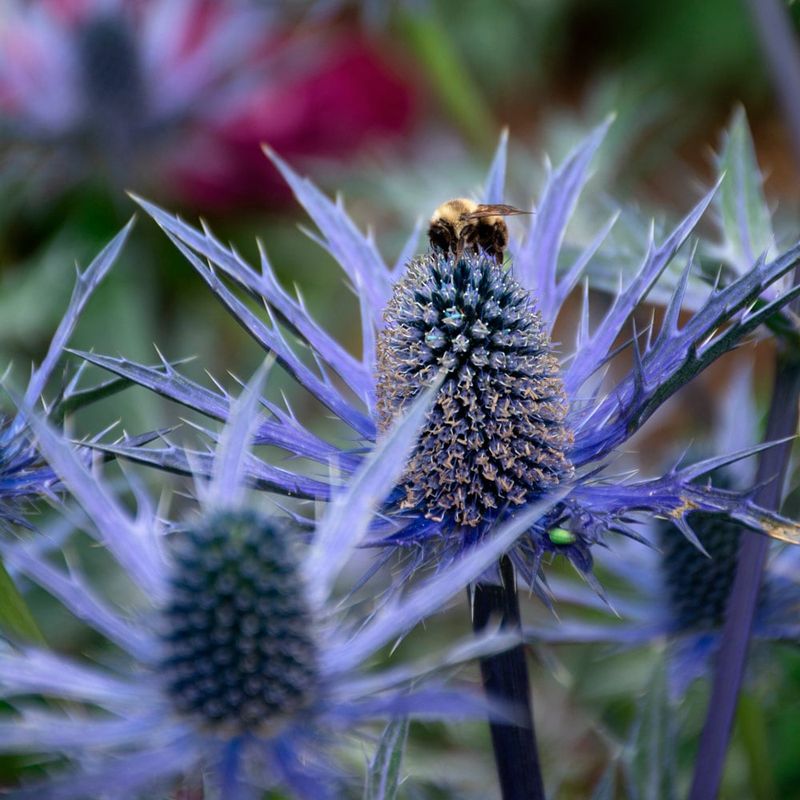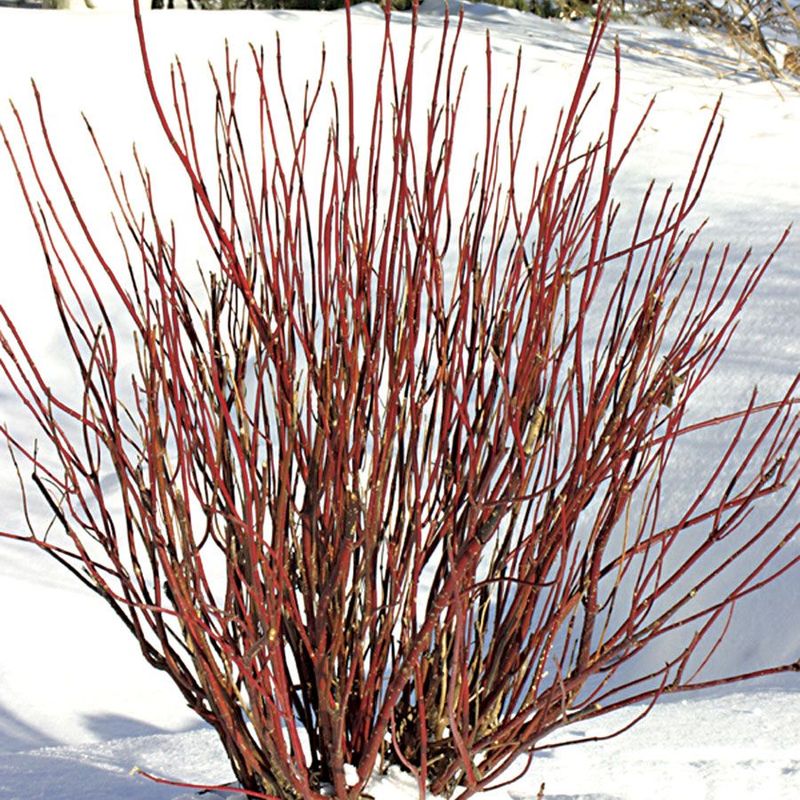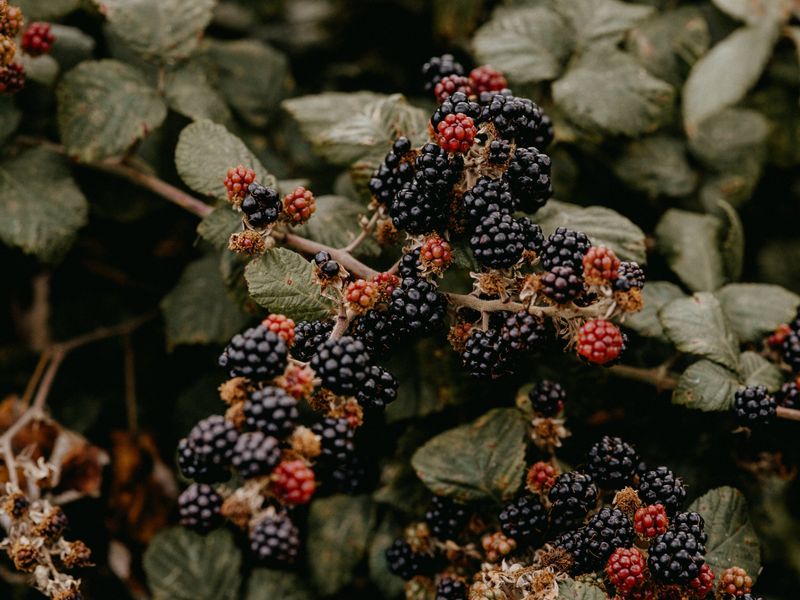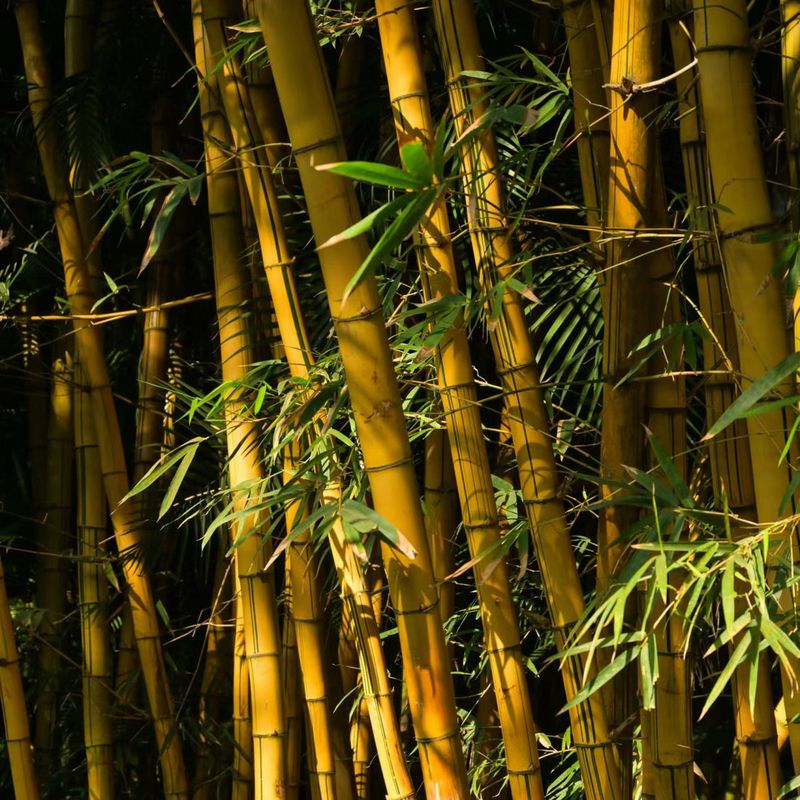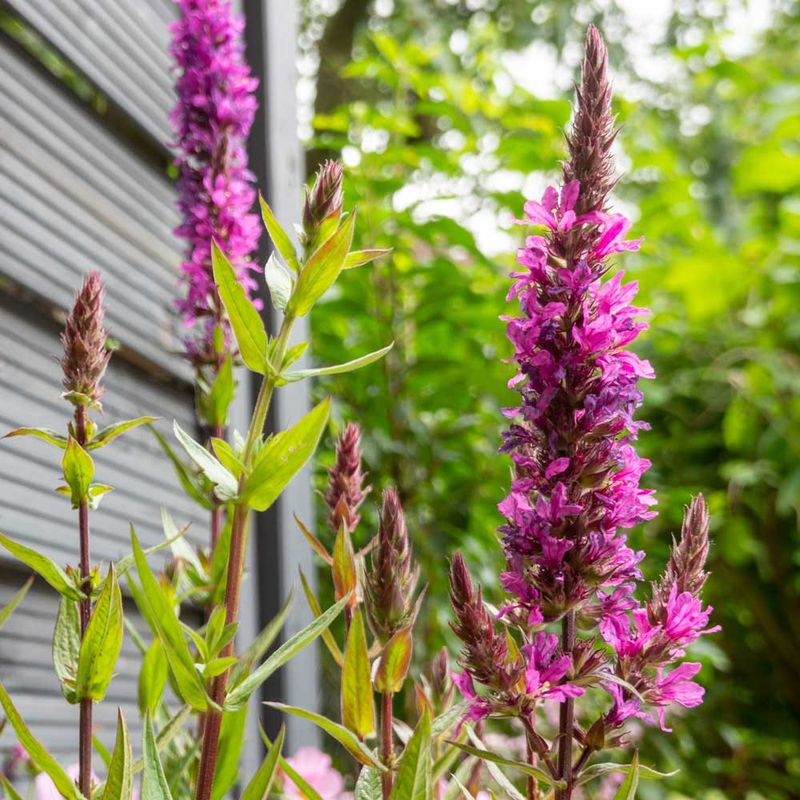The Pacific Northwest is like the Disneyland for gardeners. Rain, mild temps, and plants that practically thrive on their own. Trust me, I’ve seen my fair share of accidental plant success.
I once threw a few ferns in the ground without much thought, and now they practically have their own fan club! But while the climate makes it easy to grow, choosing the right plants can still be tricky.
From show-stopping rhododendrons to low-maintenance lavender, there are endless options. But be careful. Some plants, like invasive ivy, might take over faster than your favorite garden gnome!
1. Western Red Cedar
Nothing screams ‘cool and timeless’ like this towering tree. The Western Red Cedar is a staple in many PNW gardens. It’s not just a pretty face.
Its wood is resistant to decay, making it perfect for outdoor structures. It stands tall, providing much-needed shade and privacy. Plus, it has a delightful aroma that’s hard to ignore.
Unlike some other trees, it doesn’t make a fuss with fallen leaves. Its ability to adapt to the local climate is astonishing, making it a top pick for any garden here.
2. Douglas Fir
Ever wondered what gives the PNW its iconic skyline? It’s this majestic tree. Douglas Fir is a real eye-catcher.
Known for its robust trunk and needle-like leaves, this tree plays a vital role in the region’s ecosystem. Lumberjacks might see it as prime timber, but to us, it’s a natural skyscraper.
Its adaptability to the wet and cool climate of the PNW is impressive, making it a favorite for landscapers. A Douglas Fir in your yard? Now that’s classy!
3. Bigleaf Maple
This one’s a leaf collector’s dream! The Bigleaf Maple is known for its enormous leaves that can grow up to a foot wide.
It’s a deciduous beauty that transforms every autumn, turning a striking golden hue. Perfect for those who appreciate the changing seasons. Its sap can be used to make maple syrup, albeit with a milder flavor.
While it loves the PNW’s rain, it also casts a lovely shade during summer, making it a cool addition to any garden seeking seasonal diversity.
4. Red-Leafed Japanese Maple
Looking for a statement piece? This tree is your answer. The Red-Leafed Japanese Maple captivates with its crimson leaves and graceful branches.
It adds an elegant splash of color to any garden, especially during spring and fall. Unlike its larger cousins, it doesn’t tower over everything else, making it perfect for smaller spaces.
Its intricate leaf pattern is a conversation starter. While it appreciates the PNW’s mild winters, it can be a bit picky about its soil, so a little extra care goes a long way.
5. Sword Fern
Ever wanted a plant that’s both classy and low maintenance? Enter the Sword Fern. With its long, arching fronds, it’s a common sight on the forest floor.
This evergreen plant thrives in shady spots, making it perfect for those darker corners of your garden. It doesn’t demand much, just a little bit of moisture and voila, it’s happy!
Its dense foliage can add texture to your landscape. A true PNW native, it’s practically born to live here, making it a seamless addition to any backyard.
6. Salal
Here’s a plant that truly embodies resilience. Salal, with its glossy leaves and edible berries, is a versatile ground cover that’s as practical as it is pretty.
It thrives in the shaded understory of PNW forests, making it a perfect companion for taller trees. Birds love its berries, and you might too, as they’re great for jams and jellies.
It handles the region’s wet winters like a pro and requires little to no fuss. An easy-going plant that’s always ready to play its part in your garden.
7. Oregon Grape
Spiky leaves and bright flowers – now that’s a combination! The Oregon Grape is not just a pretty face; it’s also the state flower of Oregon.
Its holly-like leaves and clusters of yellow blooms make it an attractive choice. Come fall, it produces deep blue berries that resemble grapes. While not suitable for wine, they make excellent jellies.
It’s hardy and thrives in the PNW’s climate, tolerating shade and drought alike. If you’re seeking a plant with character and resilience, this one’s a keeper.
8. Evergreen Huckleberry
Berry enthusiasts, take note! The Evergreen Huckleberry is a delight with its sweet, edible berries. Its glossy leaves keep their color year-round, providing a splash of green even in winter.
It’s a favorite among wildlife, attracting birds and bees alike. This plant doesn’t mind a little shade, making it suitable for understory plantings.
While it can be slow to start, once established, it’s a delightful addition to any garden. Perfectly suited for the PNW, it’s a plant that rewards patience with flavor.
9. Rhododendron
Who doesn’t love a splash of color? Rhododendrons are famous for their showy, trumpet-shaped flowers. These evergreens are flexible, thriving in both full sun and partial shade.
Their leathery leaves add texture, while their blooms steal the show. They’re a favorite among gardeners for their reliability and stunning blossoms.
However, they do have a keen taste for acidic soil. With a little attention to their needs, they can be a showstopper in any PNW garden. It’s like having a floral festival in your backyard!
10. Camellia
With its glossy leaves and flowers, this plant is a winter garden wonder. It blooms when other plants shy away, offering a bright splash of color during the cooler months.
Camellias thrive in the PNW’s mild climate, preferring slightly acidic soil. They’re a bit of a diva when it comes to drainage but reward attentive gardeners with stunning blooms.
If you’re looking for a plant that screams elegance, this one’s a top contender.
11. Lupine
Here’s a plant that’s as cool as it sounds. Lupines are known for their tall spikes of colorful flowers, adding height and interest to any garden.
They’re not just eye candy; these nitrogen-fixing plants improve soil fertility. Perfect for those who love eco-friendly gardening. While they adore the sun, they can handle a bit of PNW shade too.
Just remember, they like their soil well-drained. A charming plant that’s both pretty and practical. What more could you want?
12. Bleeding Heart
Don’t let appearances fool you. The Bleeding Heart with its heart-shaped flowers is a springtime favorite. It’s the kind of plant that brings a touch of fairy tale to your garden.
Preferring shady spots, it feels right at home in the PNW’s cooler, damp environment. While it may look delicate, it’s surprisingly hardy once established.
Its unique blooms are perfect for those who want a bit of magic in their landscape. Remember, good things come in small packages!
13. Columbine
Fancy something a bit different? Columbine, with its distinctive spurred petals, is a real head-turner. It’s a wildflower at heart, bringing a touch of natural beauty to gardens.
These plants are versatile, happily growing in both sun and partial shade. While they might seem delicate, they’re surprisingly robust, tolerating a range of conditions with ease.
Their colorful blooms attract hummingbirds, making your garden a wildlife haven. If you’re looking for a plant that stands out, Columbine is a perfect pick.
14. Pacific Bleeding Heart
A neat twist on the classic, this plant is all about subtle charm. The Pacific Bleeding Heart, with its soft pink blooms, adds a gentle elegance to shaded areas.
It’s a PNW native, perfectly adapted to the local climate. This plant enjoys the cooler, damp spots, thriving under the canopy of larger trees.
Its graceful arching stems create a carpet of color in spring. For those who appreciate understated beauty, this is a delightful addition to any garden.
15. Fuchsia
Here’s a plant that knows how to make an entrance. With its vivid blossoms, Fuchsia is a favorite for adding a splash of color.
It’s like nature’s own chandelier, hanging gracefully with pink and purple blooms. Perfect for pots or in the ground, it’s versatile. While it loves the sun, it appreciates some afternoon shade in the PNW.
Keep it hydrated, and it will reward you with a stunning display. If you’re after a plant that’s both fun and fancy, Fuchsia is it.
16. Astilbe
Feathery plumes and shade-loving. What a combo! Astilbe brings a touch of softness to any garden with its delicate blooms.
It thrives in the damp, shaded areas of the PNW, adding texture with its fern-like foliage. While it’s not a sun worshipper, it does love moisture.
This plant is perfect for those who want a garden that looks lush without much effort. Its blooms might be soft, but its impact is anything but.
17. Coral Bells (Heuchera)
Here’s a little plant with a lot of personality. Coral Bells are a great way to add color without relying on flowers.
They come in a variety of shades, from deep purples to bright greens. Their tiny flowers on tall stalks are a bonus, attracting pollinators.
These plants love the PNW’s cool, damp conditions, thriving in shaded areas. Easy to care for, they’re perfect for gardeners seeking bold foliage.
18. Hostas
Big leaves, big impact. Hostas are famous for their leafy appearances and thrive in shady spots. They bring a touch of elegance with their varying shades of green, blue, and even gold.
While they’re primarily grown for their foliage, their flowers are a delightful bonus. Hostas embrace the PNW’s cool, moist climate and are fairly low-maintenance.
Just watch out for those sneaky slugs! For a garden that looks cool and classy, Hostas are a go-to choice.
19. Lavender
Here’s a plant that’s both classy and aromatic. Lavender is known for its fragrant flowers and soothing color. It’s perfect for sunny, well-drained spots in the PNW and provides nectar for bees.
Not just pretty, it’s practical too. Its essential oils are a favorite for relaxation. While it prefers dry conditions, it’s surprisingly tough once established.
For those wanting a garden that pleases the senses, Lavender is a top pick. A plant that’s as useful as it is beautiful.
20. Yew
This plant is all about sophistication and structure. Yews are known for their dense, evergreen foliage and are perfect for creating hedges or topiaries.
They’re easy to shape, making them ideal for those who love a tidy garden. While they’re not picky about soil, they do appreciate well-drained spots.
Yews fit right into the PNW landscape, handling the wet winters with ease. For a garden that’s neat and classy, Yews are a reliable choice. Just keep those berries away from kids and pets!
21. Mock Orange
Love citrus scents but live in the PNW? Meet your new favorite plant. Mock Orange boasts clusters of white flowers with an intoxicating fragrance.
It’s the perfect plant for those who want a sensory experience in their garden. Thriving in sun to partial shade, it’s adaptable and easy to care for.
While it’s not related to oranges, its aroma is just as delightful. For a garden that’s both fragrant and fancy, Mock Orange is a wonderful addition.
22. Ceanothus (California Lilac)
Fancy blue flowers? Ceanothus is here to impress. Known as the California Lilac, this plant offers a burst of color with its fancy blooms.
It thrives in sunny spots, making it a great option for well-drained PNW gardens. While it’s drought-tolerant, it appreciates a little attention during dry spells.
Its glossy leaves add structure, while the flowers attract pollinators. Perfect for those who love a garden with a pop of color.
23. Tiarella (Foamflower)
Tiarella, or Foamflower, is known for its dainty white blooms and attractive foliage. It’s a shade lover, thriving in the cool, damp areas of the PNW.
Its leaves resemble maple leaves, adding an interesting texture. Perfect for woodland gardens, it’s a plant that requires little fuss.
For those who want a gentle and elegant touch to their landscape, Tiarella is a charming choice. A plant that’s as easy-going as it is pretty.
24. California Poppy
Flower that’s always in style. California Poppies bring a splash of color with their vivid orange blooms. They’re sun-lovers, thriving in well-drained soil.
Perfect for those who want a lively garden without too much trouble. These plants are drought-tolerant, making them a great choice for eco-conscious gardeners.
While they may not be native to the PNW, they fit right in with the local flora. A garden with California Poppies is a garden that’s always ready to impress.
25. Ferns (e.g., Lady Fern)
A touch of the prehistoric in your backyard. Ferns, like the Lady Fern, are a classic choice for shaded, damp spots.
Their delicate fronds add texture and can make any garden feel like a woodland retreat. They thrive in the PNW’s cool, moist climate, needing little more than a bit of shade and moisture.
For those who appreciate simplicity and elegance, ferns are a natural choice. They require minimal fuss and offer maximum impact, making them a garden staple.
26. Kinnikinnick (Bearberry)
Ground cover with attitude. That’s Kinnikinnick for you. This plant is perfect for covering bare spots with its shiny leaves and bright red berries.
It’s hardy and thrives in well-drained soils, making it ideal for the PNW. Birds love its berries, adding to its garden appeal.
While it’s a slow grower, its low maintenance nature makes it a favorite for those who like a garden that takes care of itself.
27. Mountain Laurel
A classic beauty with a modern twist. Mountain Laurel is known for its clusters of pink and white flowers that look almost too perfect to be real. It’s a shade lover, thriving in the cool, damp areas of the PNW. While it’s a bit of a slow grower, the wait is worth it once it blooms. If you’re after a plant that brings elegance and charm to your garden, Mountain Laurel is a wonderful choice. A plant that’s both classy and cool.
28. Aster
Looking for late-season color? Asters are your answer. These plants are known for their star-shaped flowers that bloom in late summer and fall.
They’re sun-loving and thrive in well-drained soil. Perfect for those who want to extend the color in their garden into the cooler months.
Their blooms attract butterflies, making them a favorite for wildlife enthusiasts. Asters bring elegance to any garden and are a must-have for those who love a dynamic landscape.
29. Sea Holly (Eryngium)
Here’s a plant that’s both tough and stunning. Sea Holly, with its spiky blue flowers, adds a unique touch to gardens.
It’s drought-tolerant and loves the sun, making it perfect for well-drained areas in the PNW. Its silvery leaves are a great contrast to the blooms.
This plant is ideal for those who want something a bit out of the ordinary. Sea Holly is a plant that offers both style and substance, making it a standout choice for gardeners.
30. Redtwig Dogwood
Winter gardens don’t have to be dull. Redtwig Dogwood brings color with its bright red stems that stand out against a snowy backdrop.
It’s a great plant for adding structure and interest during the colder months. While it prefers damp areas, it’s adaptable and can handle various conditions.
Its white berries attract birds, adding to its garden appeal. For those who want a garden that remains interesting year-round, Redtwig Dogwood is a perfect choice.
31. English Ivy (Invasive)
A plant that’s a bit too enthusiastic. English Ivy is well-known for its vigorous growth, often taking over areas if left unchecked.
While it can provide excellent ground cover, its invasive nature makes it a risky choice. It has a knack for climbing and can smother trees and structures.
In the PNW, it thrives a bit too well, often at the expense of native plants. If you’re considering this plant, be prepared for regular maintenance to keep its growth in check.
32. Himalayan Blackberry (Invasive)
Tasty but troublesome. The Himalayan Blackberry is notorious for its aggressive growth, often forming dense thickets that are hard to control.
While the berries are delicious, the plant’s thorny nature and invasiveness make it a challenging garden guest. It thrives in the PNW, quickly taking over if not managed.
For those who love blackberries, it’s best to look for less invasive varieties. This plant requires diligent control, but if left unchecked, it can turn your garden into a prickly problem.
33. Bamboo (Invasive, aggressive spread)
A plant with a mind of its own. Bamboo is admired for its tall, elegant stalks, but its rapid spread can quickly become a gardener’s nightmare.
In the PNW, its growth is vigorous, often outcompeting other plants. It’s essential to use barriers if you decide to include it in your garden.
While it offers excellent privacy screens, the maintenance to keep it in check can be daunting. For those who love the look but not the hassle, consider opting for clumping varieties instead.
34. Tree of Heaven (Ailanthus altissima)
Not quite the heavenly guest its name suggests. The Tree of Heaven is known for its rapid growth and ability to thrive in poor soil.
However, in the PNW, it can quickly become invasive, spreading via suckers and seeds. Its ability to outcompete native species makes it a less desirable choice for eco-conscious gardeners.
If you’re considering this tree, be prepared for regular maintenance to control its spread. For those who value biodiversity, it’s best to look for alternatives.
35. Purple Loosestrife (Invasive)
Pretty but problematic. Purple Loosestrife is admired for its flowers, but its invasive nature can wreak havoc on local ecosystems.
It thrives in wetland areas, quickly forming dense stands that displace native vegetation. In the PNW, its growth is rapid, often outcompeting more desirable plants.
For those who love its look, it’s crucial to choose cultivars that are less invasive. This plant requires careful management to prevent it from taking over and outshining the native flora.


